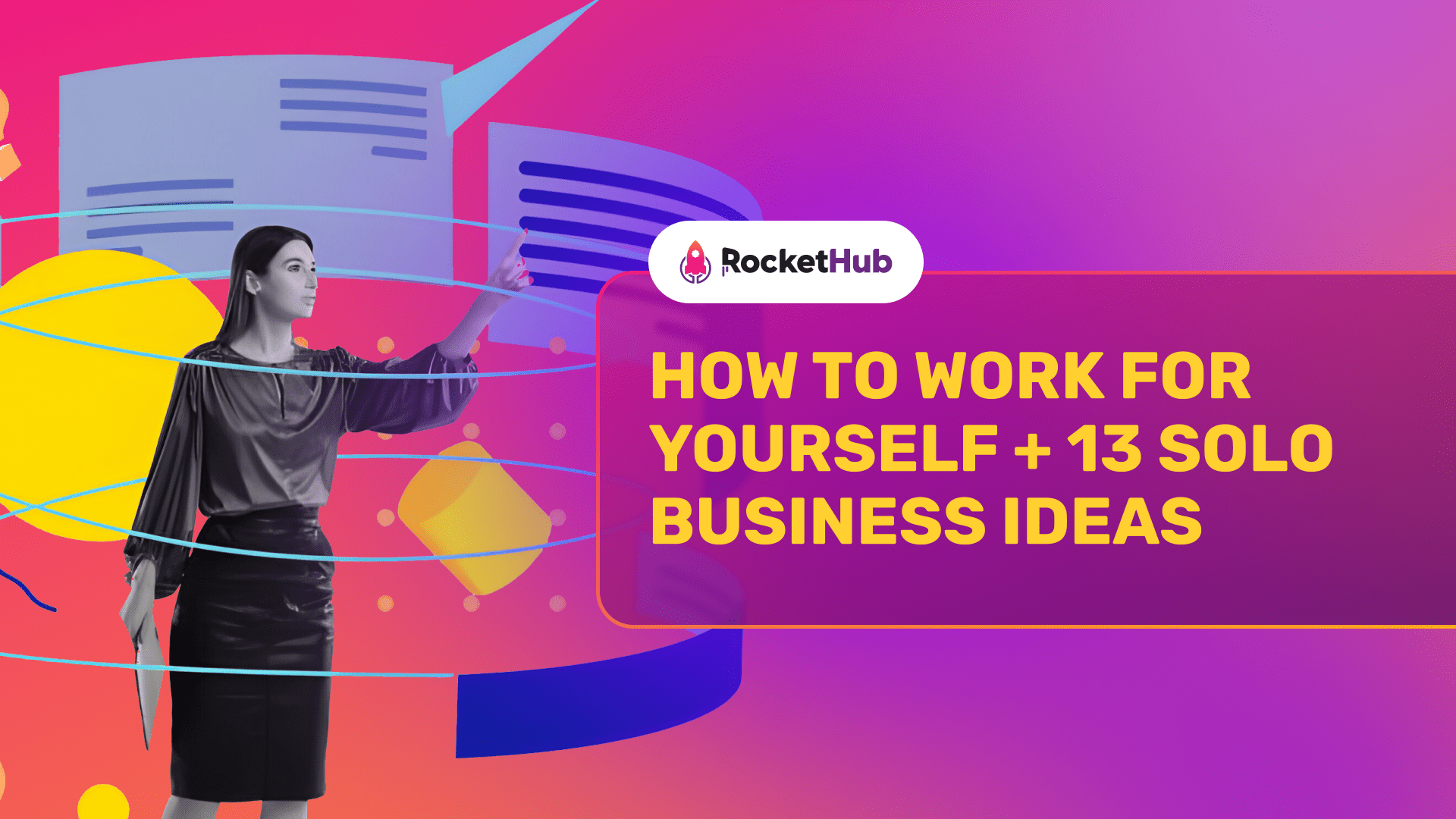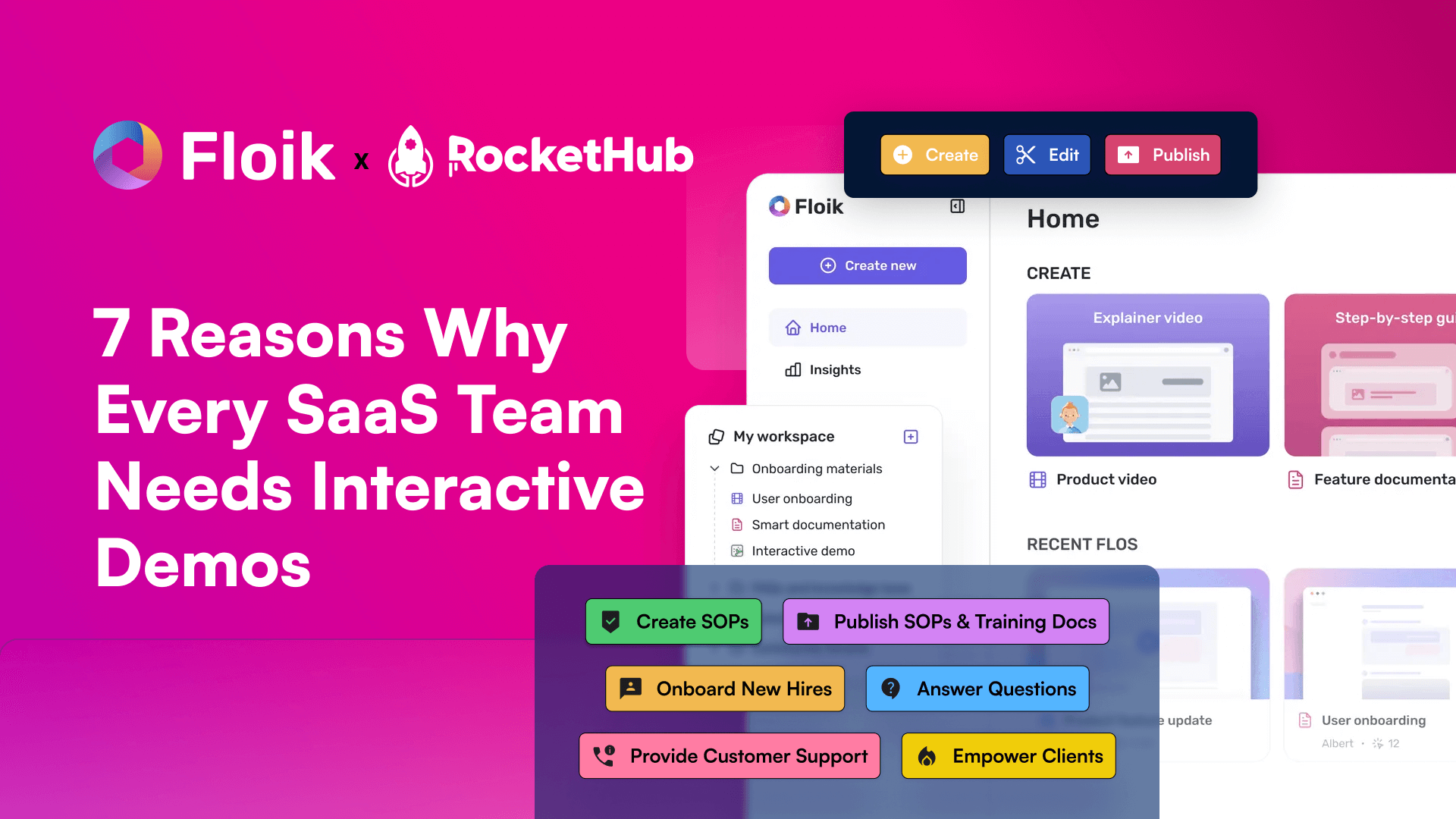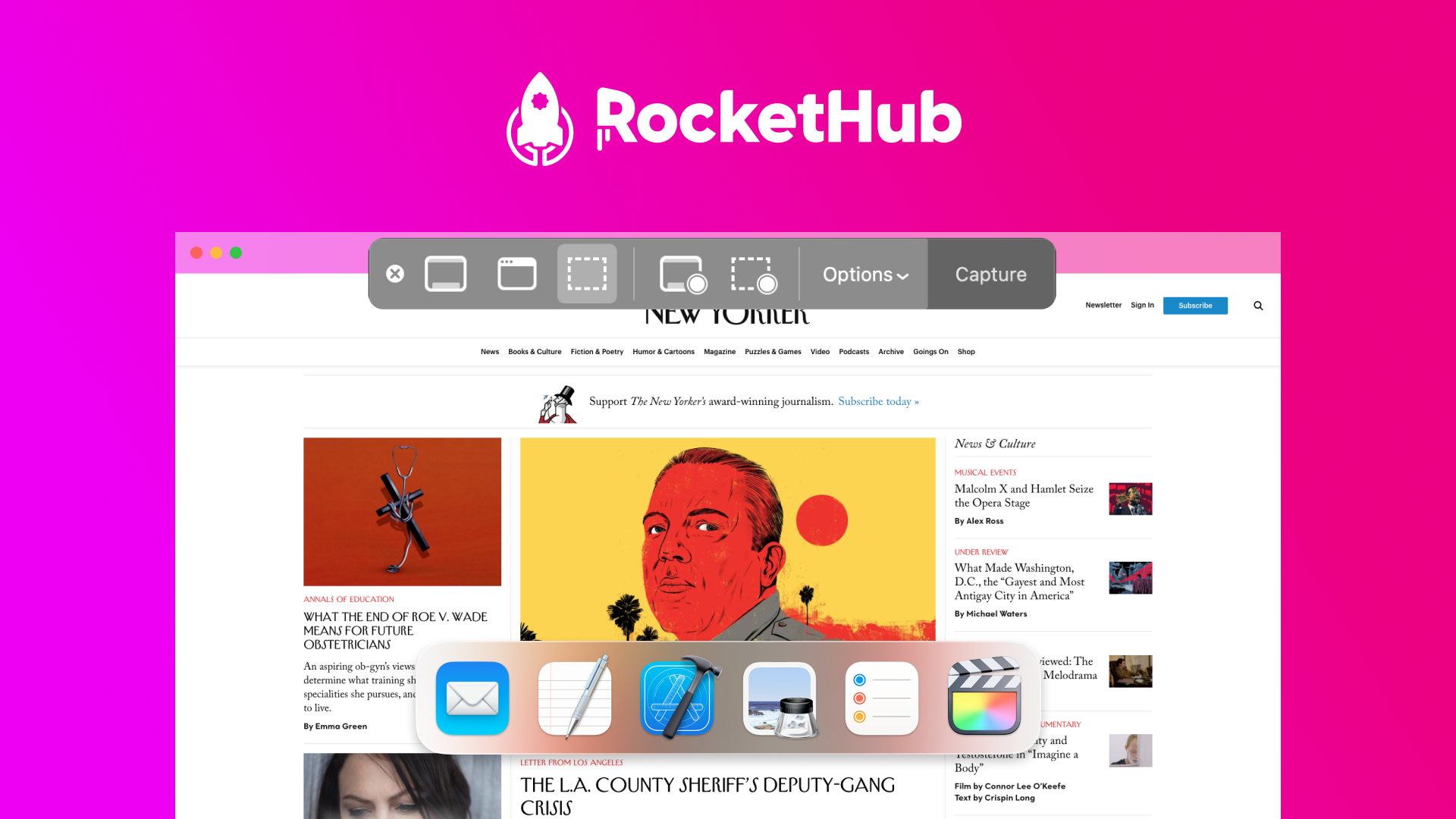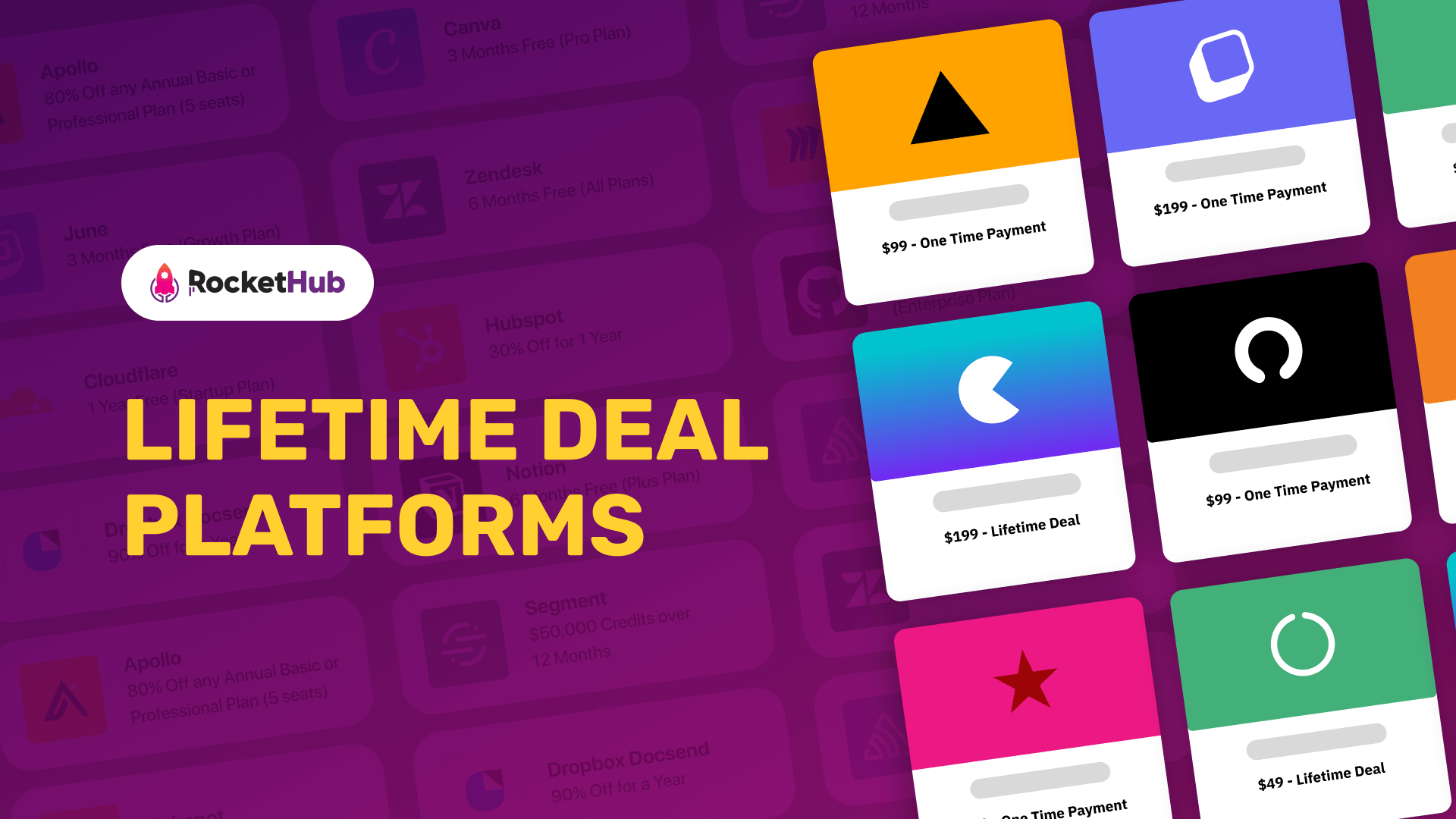
Starting A SaaS Business: A Guide to Plans, Templates, and Models
- RocketHub Team
- November 12, 2021
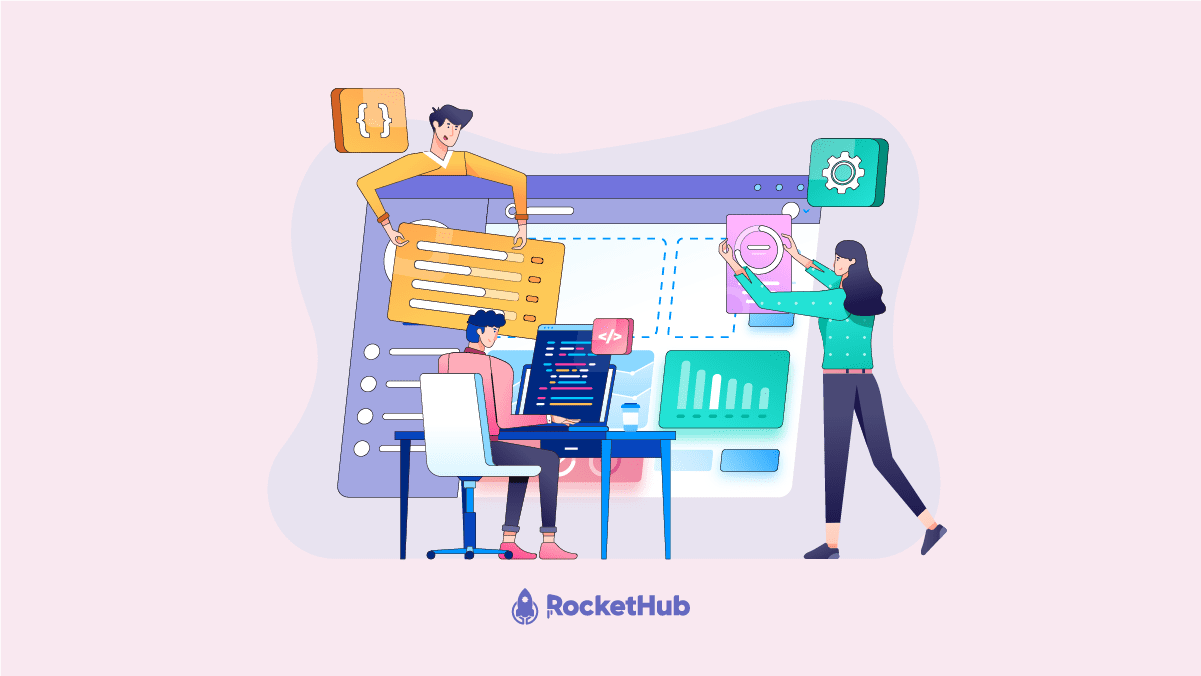
Are you starting a SaaS Business? Did you know that people in the SaaS industry are the only ones who are always looking for new innovative ideas? They strive and pour their hearts out to make a good product into the best. Lucky for them, the road to success is paved with lots of money! It makes all the blood, sweat, and tears are 100% worth it at the end of the day.
If you’re just testing the water in the SaaS industry or planning to launch SaaS in the near future, then you are landing on the right page! We will be tackling all the nitty-gritty things anyone should know when starting a SaaS business. Take this as your trusted guide and let’s get started!
Creating Your SaaS Business Plan
SaaS is still a relatively niched industry where a lot of money can be made. The SaaS market is growing rapidly and we can just see how advanced and ambitious it can be. You might think that it’s a saturated market because there are plenty of SaaS products out there. However, most of them still need improvements in the healthy competition inside the niche. That is why you need to have an innovative idea and go ahead with it! There’s still enough fish in the water for you too!
Nowadays, if you have a good product, the market size you can jump into can be huge. Due to the high level of digitalization, the entire world is experiencing a strong need for SaaS products. There are various sectors such as education, marketing, or healthcare that use SaaS products to be more efficient and discoverable.
But wait, getting into the SaaS business isn’t as easy as opening a coffee shop!
Zero is your business plan. While it sounds very fancy and pretentious, this step is vital and shouldn’t be missed. A business plan is basically a business strategy. A guide with goals and processes that will help your product become successful over a certain period of time. You can actually browse to find a business plan template or tutorial in seconds – thanks to the almighty internet! However, if that doesn’t work for you, hiring someone with experience would be a great help.
Why a Lean Business Plan Suits SaaS Business
While you’re trying to realistically map out your business plan, make sure to include several essential things below:
- What problem your product is solving?
- Who will buy your product?
- What type of pricing will work best?
Those three questions above will help you to set up a clear goal for your SaaS to survive the startup phase as well as be profitable at the same time and make your business grow. Make sure that you really understand these things before you embark on the journey.
The question about your target customers is highly important because it will help you find the right pricing for your product. Decide how you’re going to start selling the product to – will it be regular customers (B2C) or will it be other businesses (B2B)? When you’re selling to a regular customer, the price will definitely be different than when you’re selling to a business or company.
A lean business plan will outline the functions and main benefits of your product, the USP, the pricing model, and even your estimated revenue. This is why your business plan should clearly state the visions, goals, and profits you are estimating to make over a certain period of time.
A business plan will help you to stay on track and also attract investors and partners that would be translated as… MONEY! While some investors will demand to see more than just a plan and some numbers, having the confidence and the right process beforehand will significantly help you to achieve your goals.
Understanding The SaaS Business Model
By now you’ve probably figured out the difference between the SaaS industry and any other business you’ve ever seen before. The product, infrastructure, pricing, and even the business model for SaaS are different. It’s a different world with different rules.
Everyone knows that in this industry the core of any business model is recurring users aka subscribers. That is the main strategy all SaaS products go by because it’s highly effective. One-off sales are not sustainable, because, for each product, there is a limited amount of people that will buy, therefore you want them to keep buying the subscription for months on end as you expand your audience.
Another thing worth mentioning is the fact that your product needs to be at least decent if not great in order to have monthly subscribers and grow. Whether it’s used by other businesses regularly, or simply filling a need in the market, the product has to entice the user to pay almost any fee just to use it.
The giants in the SaaS industry can give some good advice about how to succeed, and it sounds a little like this:
- Invest in developers and marketing from the beginning – if you want customer retention
- Early profits should be reinvested in the company in order to scale it
- Explain the value of your product with the help of your USP
Given this advice, no wonder that so many startups fail in their first year of existence – it’s definitely not an easy job!
SaaS Business Key Metrics
Metrics are a key part of any successful story just like in any other business. It’s a kind of data that has a lot of insights to help you make the right decision in reaching your goals. If you don’t know what metrics to follow, no worries – we got you covered! Here are the main key metrics that you and your team should focus on.
Churn Rate
Have you ever heard about churn? It’s a valuable and powerful metric that everyone in the SaaS industry religiously follows. Churn rate is the rate at which customers stop doing business with you. In a way, it’s the rate at which people unsubscribe or stop using your SaaS product or service.
We all know that customer loyalty is hard on everyone no matter what you do – they just won’t stay with you forever. Sadly, you have very limited actions to take in order to stop the customer to go away.
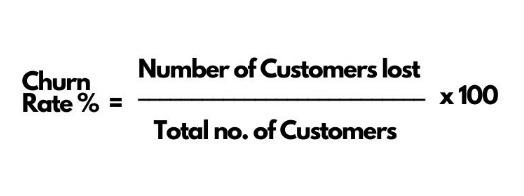
Calculate your churn rate by dividing the number of subscribers in a month by the total number of customers. Keeping track of your churn rate each month can help you make certain business decisions or detect fluctuations in the rate.
Customer Acquisition Cost (CAC)
CAC is a great indicator of your profit because most of these metrics go hand in hand with your marketing efforts and costs. We are all aware that you need to spend money to acquire new customers and ideally the costs get lower and lower with time.

In order to find out what your CAC is, do this simple math: divide the total cost you spend on marketing and sales by the number of acquired customers over a certain period of time which is usually by month.
Monthly Recurring Revenue (MRR)
Most metrics give you financial insights, but nothing like your MRR. This metric is telling precisely how much money you’re making each month, and that is something any business manager should know by heart. This metric can be calculated by multiplying the number of customers by the average revenue each month.

Of course, like anything in this world, this metric can fluctuate due to churn rates and customer acquisition costs. Following MRR you can predict growth rates and persuade investors to join you.
Average Revenue Per Account (ARPA)
Another key insight into your financial status is ARPA or average revenue per account. It’s a long name but you’ll want to monitor this one closely each month.

What ARPA does is tell you the average revenue acquired from one client each month or the year. You can see the amount by dividing the total MRR by the number of customers. Easy as that!
Customer Lifetime Value (CLV)
All metrics are important, but some are more crucial and relevant than others. For instance, CLV or customer lifetime value gives you precious information about just how much revenue one single customer can bring you. In SaaS, users come and go on the regular, so by following this metric and CAC you’ll know how much money you’re spending to get new customers and how much money each of those customers brings you.

If CLV is lower than CAC, then you have a big problem. CLV is calculated by multiplying the average revenue per account by the percentage gross margin, then you divide it by the average churn rate. It’s easy math you can do in Excel or use a 3rd party app.
Customer Retention Rate (CRR)
This one is about those loyal customers that have stuck with you over time, those who pay the subscription every month. If this metric is stable or increasing each month, you can pat yourself and your marketing team over the back for doing a great job. It’s important to know how many new customers come and go each month, but also how many stay with you.

Since it’s a percentage you can calculate it by dividing the number of customers currently using your product or service by the total number of customers at the start of the specific time period. Then, multiply by one hundred to get the percentage.
The Marketing Approach to SaaS
Navigating the waters of SaaS growth can be tough and oftentimes overwhelming, but if it wasn’t also fun and exciting nobody would do it, right? From the startup stage to the stable one it can take some long years, but if you have a good marketing strategy and a steady business plan you can do it.
Since we live in such a digital area, marketing is really something you don’t want to be frugal about. It might seem like a big investment, but with any business, you need to have a long-term vision. Needless to say that since you sell a product that will be used on a digital device, such as a smartphone or computer, you cannot miss out on online marketing and ads. People spend a lot of time on their devices, and if you target them with smart ads and good copy they will come and check you out.
If you’re wondering what marketing efforts to include in your strategy try building your audience, decide if you need to invest in inbound or outbound marketing, and invest in your marketing funnel. We’ll elaborate on each one of these elements, so you can better understand why they’re so important.
Build Your Audience First
No matter what type of business you run, but especially the SaaS ones, you need to focus a lot on building the audience. To do this you’ll need to invest some time and money into your website and blog, your social media channels, your product demos, and email marketing campaigns.
It might seem like a lot, but all these elements will draw your ideal client and convert them into customers. And the best part is that you can build your audience without damaging your budget or hiring a marketing agency.
Out of the things we mentioned, a good website is one of the most important, because it’s the final step of each conversion. Whether you’re advertising on social media, sending emails, or posting a blog article, everyone will end up there, and it needs to be perfect. Steady daily efforts, along with data will help you get there.
Most SaaS companies spend a lot of time creating content for their blogs. Optimized blog articles can bring in thousands if not millions of users, and some of those users will be curious to know more about your product. It’s a very common SaaS growth strategy.
Spend Your Money Wisely
You want to grow and scale your business, but you don’t really know or you’re not sure how to get the best bang for your buck. A 5:1 ratio is usually a good ROI, but the question still stands, what marketing efforts are suited for you?
Inbound marketing or outbound marketing? Let’s see.
Traditional outbound marketing includes radio ads, commercials, and whatever way of interrupting someone’s activity in order to start a conversation about your product you can think of. Nowadays outbound marketing includes paid and organic social media content, in the form of Google Ads, Facebook Ads, or feed posts.
The goal with outbound marketing is to grab people’s attention, make them curious and make brand awareness. For any business, these tools are very useful and can help you better understand your audience.
There is also inbound marketing which includes blog articles, other forms of content, and email marketing. They help you educate your audience and showcase just how much they need your product in their lives because it solves a problem. It’s a less aggressive approach that needs more time to show results. People who buy SaaS products need more time to finalize the purchase, and in that time you have to provide them with all the resources to convince them. Only after they’ve done some serious research and thinking will they be ready to buy.
The SaaS Marketing Funnel
As you make your way into the SaaS world of marketing and lead generation, you’ll hear people talk about the marketing funnel. To make it easier for you to understand, a marketing funnel is a process that maps out every step of a customer’s journey from getting to know your brand to purchasing the product. It’s theoretically shaped like a funnel because you start with a broad audience that gets acquiesced with your product, but only a few of those end up purchasing it.
You don’t need to be an expert to create a marketing funnel but it sure helps to know what you’re doing. One of the most important things everyone needs to know about funnels is that you need to know who your customers are, what they like, and what their problems are. Only then you can create a good funnel and attract them.
The basic structure of any funnel has 3 stages: Awareness, Consideration, and Decision. And if you create the right strategy and content for each stage of the funnel you can significantly increase your revenue over time.
Conclusion
Hopefully, this article gave you a little insight into how it’s like and what it takes to start a SaaS business these days. It’s not an easy job, but someone’s gotta do it. Remember that the hardest part of any project or business is to start.
Share This Post
RocketHub Team
The launch crew at RocketHub writes about startup and SaaS growth. Be a fellow Rocketeer and show some love by commenting below with your thoughts on our content.
Table of Contents
Get The Latest Updates
Subscribe To Our Weekly Newsletter
Sign up below to be one of the first crew members onboard and get early access to amazing deals.
Recent Posts


Social Media
Categories
Related Posts
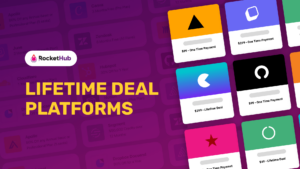
Lifetime Deal Platforms
The best lifetime deal platforms for software. Platforms lik RocketHub scour the web for the highest quality products to bring buyers the best lifetime deals on their platform.
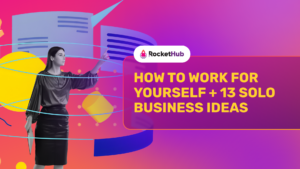
How to Work for Yourself + 13 Solo Business Ideas
Do you ever wonder if being your own boss could truly set you free? In this article, we’ll explore the theory that unleashing entrepreneurial freedom
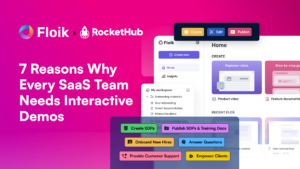
7 Reasons Why Every SaaS Team Needs Interactive Demos
Making a Case for Interactive Demos: 7 Reasons Why Every SaaS Team Needs Them Let me paint a scenario for you. You want to buy
